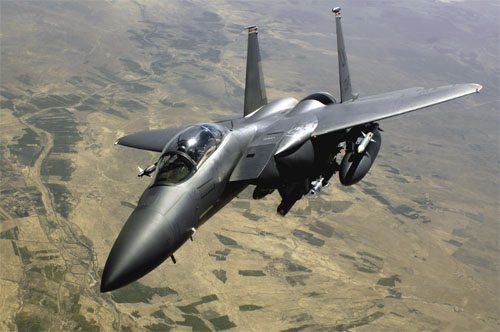INTRODUCTION
The Python-4 missile was developed by Israel at a time when the hostile Arab nations surrounding Israel were obtaining advanced aircrafts like the MiG-29 equipped with the enviable R-73 Archer and Helmet mounted cueing systems. Since WVR form of air combat was vital to Israel's defense, it was decided to develop a successor to the combat-tested Python-3 missile.
The enemy weapon was the R-73 Archer with 45 degrees off-boresight capability, which increased to 60 degree once uncaged. The missile featured Thrust-Vectoring motors, which would enable it to out-turn almost any fighter at that time. A new technology named ‘Transverse Control Engine' would prevent any misses during the terminal stages of flight.
DESIGN
Unlike the AA-11 Archer that has TVC motor for agility, the Python-4 makes use of carefully designed aerodynamics that give the missile a large amount of lift in all profiles of flight. A cruciform fixed canard is mounted on the nose to stabilize high angle of attack airflow over the cruciform canard control surfaces, which are used for pitch and yaw control, a technique used by a number of existing WVR AAMs. Rolling is achieved through paddle vanes behind the control surfaces, and the swept tail surfaces are designed to swivel about the fuselage to reduce lift-induced rolling during high-alpha turning.
MOTOR
One of the major problems of the third generations of dogfight missiles was that they had short-burn motors. This meant that to target the enemy, the pilot would have to get in close, especially in tail-chase situations. And even after a close-ranged launch, the missile will not have enough energy to keep turning with the target for an extended period of time.
The Python 4 employs a 6 in diameter rocket motor, a feature it shares with the Archer and the ASRAAM. The long burn motor has a tailored thrust profile to achieve optimal acceleration for close-in closing engagements and high energy for terminal phase homing or end-game engagement. Thrust vectoring is not employed; the missile instead utilizes aerodynamic design to achieve a high turn rate throughout its flight envelope. The motor 80 kN thrust for 3 s to accelerate, and 0.7 kN for a further 80 s to sustain energy.
The missile's motor allows a range of 40kms in straight line, and an engagement range of 15 kms with full maneuvering, and minimum range is 500mts, which is considerably less than any other missile. The motor is smokeless and this is an important factor during dogfights, where pilots have to locate incoming missiles with the eye, instead of gazing at the RWR or watching a MAW display.
SEEKER / PROCESSOR
The seeker is the most important part of any AAM. All third generation dogfight missiles like the AIM-9M Sidewinder, R-60 Aphid and Magic-II employed seekers that could achieve independent lock-on at ranges of 10-15 kms. Targets beyond 20-25 degrees off-boresight could not be engaged for they were out of the missile's FOV.
After the Python-4 was revealed, US reported the seeker to be a cooled two-colour rotating-reticle design. But this was later denied by Israeli sources as they put it to be a multiple detector array seeker, which has an IRCCM capability and the ability to reject background IR radiation. It is described by Rafael as 'more than an imaging infra-red seeker' in terms of functionality, though it does not use actual IIR techniques. There are unconfirmed reports that the seeker has the ability to discriminate in three spectral bands and can detect targets at a range in excess of 40 km. The seeker is optimized for use not only against conventional fast jet targets, but also against low- and slow-flying targets (such as helicopters) against a cluttered background. In order to engage a target, even at very high off-boresight angles, the pilot simply has to look at it through his helmet-mounted sight and fire. The seeker is mounted on a three-axis gimbaled platform with an up/down/rolling action. The seeker-tracking rate is described as 'faster than the eye' with a ±90º off-boresight capability.
This advanced gimbaled seeker is coupled with a digital signal processor to leave out all the ground clutter and provide the most accurate target solution to the missile. This allows the Python-4's FCS to decide trajectories that are considered impossible for other missiles. However, this approach has one drawback – the engagement time of the Python-4 is considerably lengthy, and although it may ensure a kill, it forces the pilot to make sure that the kill has been achieved.
OTHER FEATURES
• Python-4 can turn 180 degrees in 3 seconds flat.
• Newer Python-4 (jointly developed by Rafael and LM) can engage off-bore targets without an HMS. This means that any aircraft with an AIM-9L compatible pylon can carry Python-4 and engage off-boresight targets.
• Unique engagement pattern of Python-4 – The missile does not go into a ‘pure pursuit' mode while chasing a turning target, but instead goes wide (lag pursuit) of the target's turn and pulls into the target at the end of the turn, when the missile has the energy but the target is sapped.
• The Python 4 is controlled by a combination of seeker input and a digital autopilot that optimizes maneuvering to sustain energy while maintaining seeker contact.
|
SPECIFICATIONS
|
|
| DESIGNATION | Python-4 |
| TYPE | Short-range IR guided missile |
| MANUFACTURER | Rafael Systems, Israel |
| DATE DEPLOYED | Mid 1980s |
| WEIGHT | 120 kg |
| LENGTH | 3.0 m |
| DIAMETER | 160 mm |
| FIN-SPAN | 640 mm |
| PROPULSION | Double-base solid propellant rocket motor |
| WARHEAD | 11 Kg HE Fragmentation |
| FUSE | Active Laser, secondary impact fuse |
| SEEKER | Multi-element all-aspect off-boresight IR seeker |
| HMS | DASH Helmet Sight from Elbit |
| RANGE | 0.5 – 15 kms (40 kms kinetic range) |
| SPEED | Mach 3.5 |








